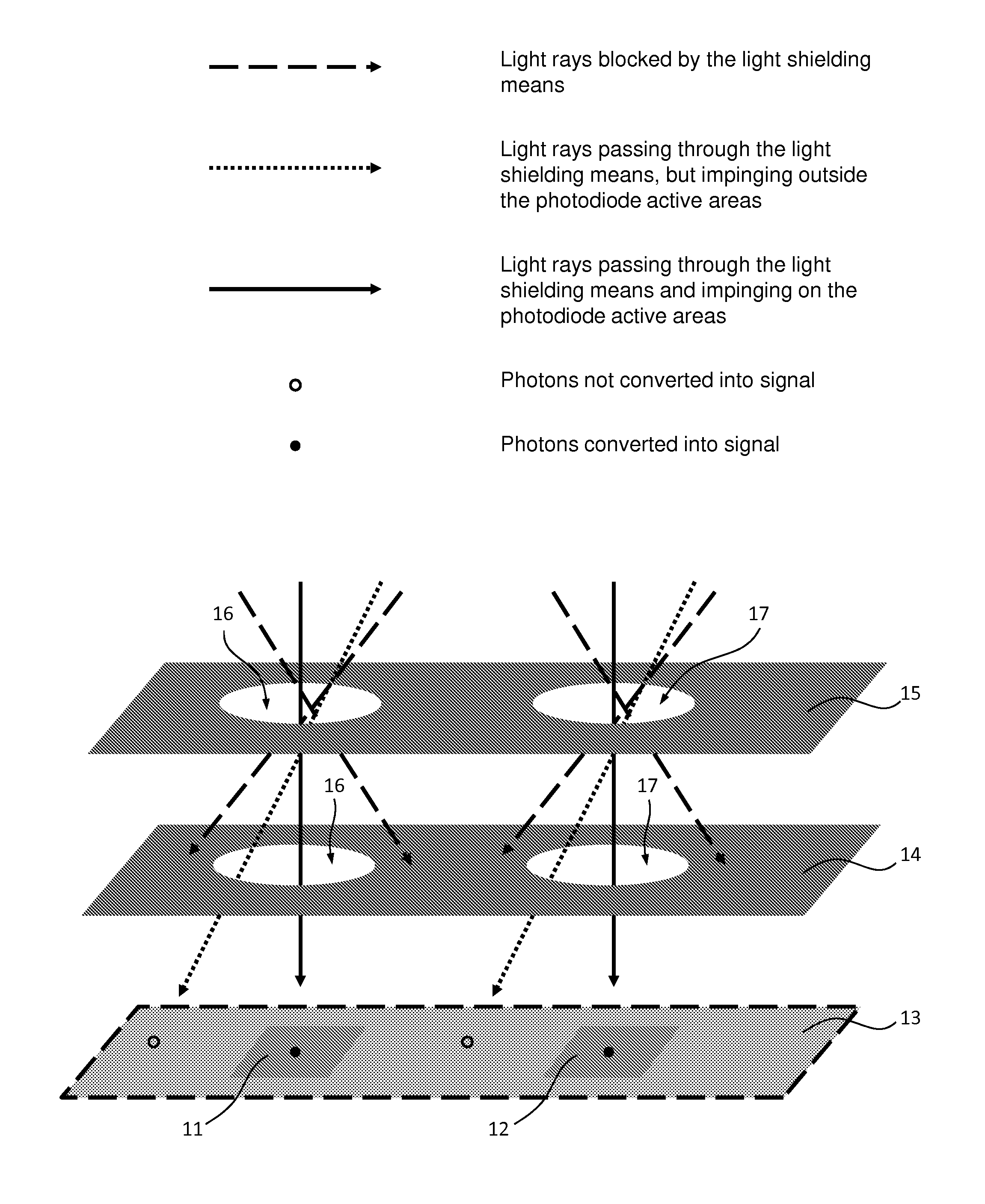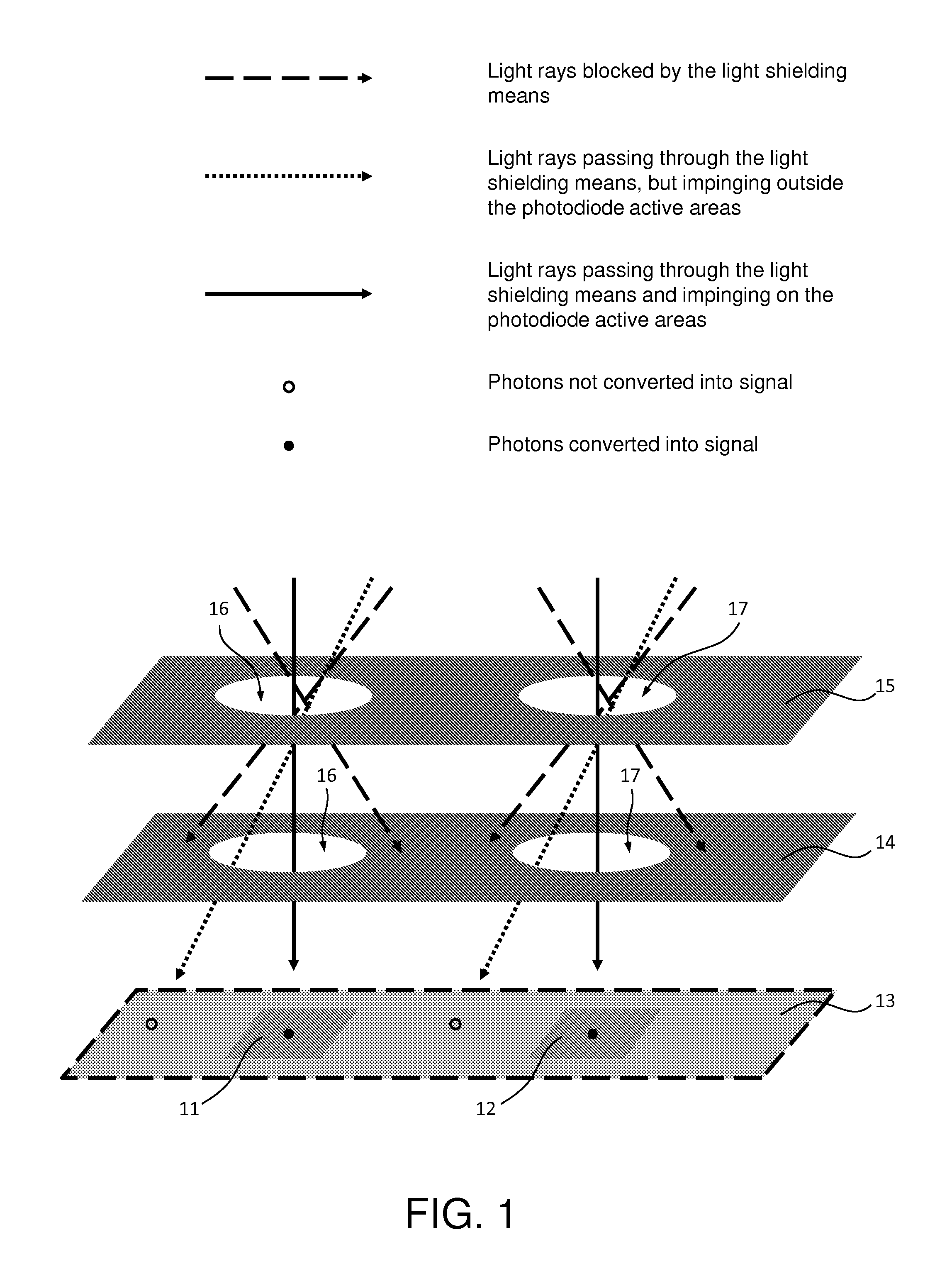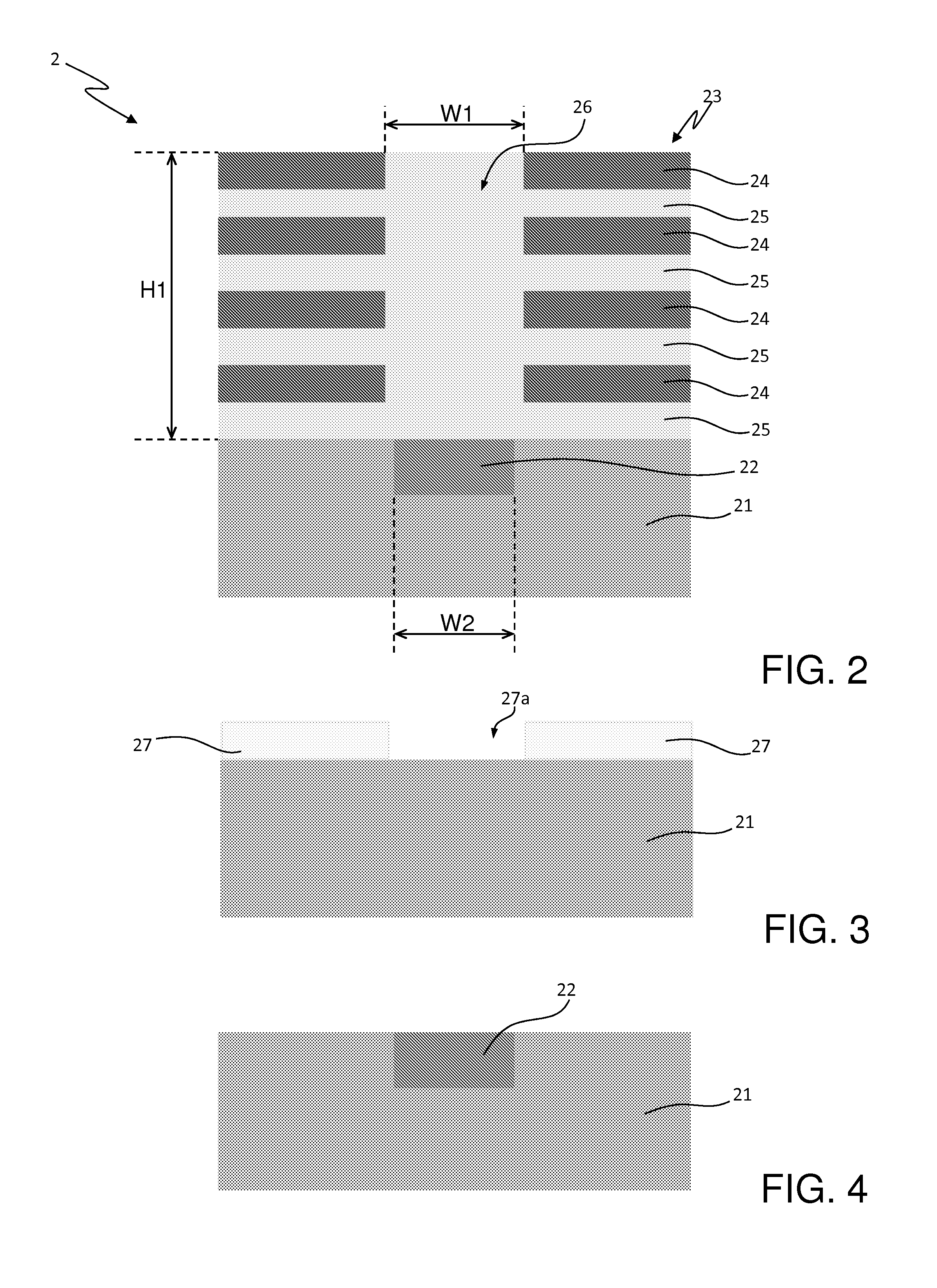Optical sensor with narrow angular response
a technology of optical sensors and angular response, applied in the field of optical sensors, can solve the problems of narrow interference with the light from the target volume of users' bodies, and particular reducing, and achieve the effect of limiting the angular response of optical sensors
- Summary
- Abstract
- Description
- Claims
- Application Information
AI Technical Summary
Benefits of technology
Problems solved by technology
Method used
Image
Examples
Embodiment Construction
[0032]The following discussion is presented to enable a person skilled in the art to make and use the invention. Various modifications to the embodiments will be readily apparent to those skilled in the art, without departing from the scope of the present invention as claimed. Thus, the present invention is not intended to be limited to the embodiments shown and described, but is to be accorded the widest scope consistent with the principles and features disclosed herein and defined in the appended claims.
[0033]The present invention stems from Applicant's idea of integrating, into an optical sensor based on CMOS technology, light shielding means designed to define an angular range around a given incident direction and to suppress incident light with incidence angle outside the defined angular range. Preferably, said optical sensor equipped with the light shielding means can be integrated into a System-on-a-chip (SoC) along with read-out circuitry, Analogue Signal Processor (ASP), Di...
PUM
 Login to View More
Login to View More Abstract
Description
Claims
Application Information
 Login to View More
Login to View More - R&D
- Intellectual Property
- Life Sciences
- Materials
- Tech Scout
- Unparalleled Data Quality
- Higher Quality Content
- 60% Fewer Hallucinations
Browse by: Latest US Patents, China's latest patents, Technical Efficacy Thesaurus, Application Domain, Technology Topic, Popular Technical Reports.
© 2025 PatSnap. All rights reserved.Legal|Privacy policy|Modern Slavery Act Transparency Statement|Sitemap|About US| Contact US: help@patsnap.com



